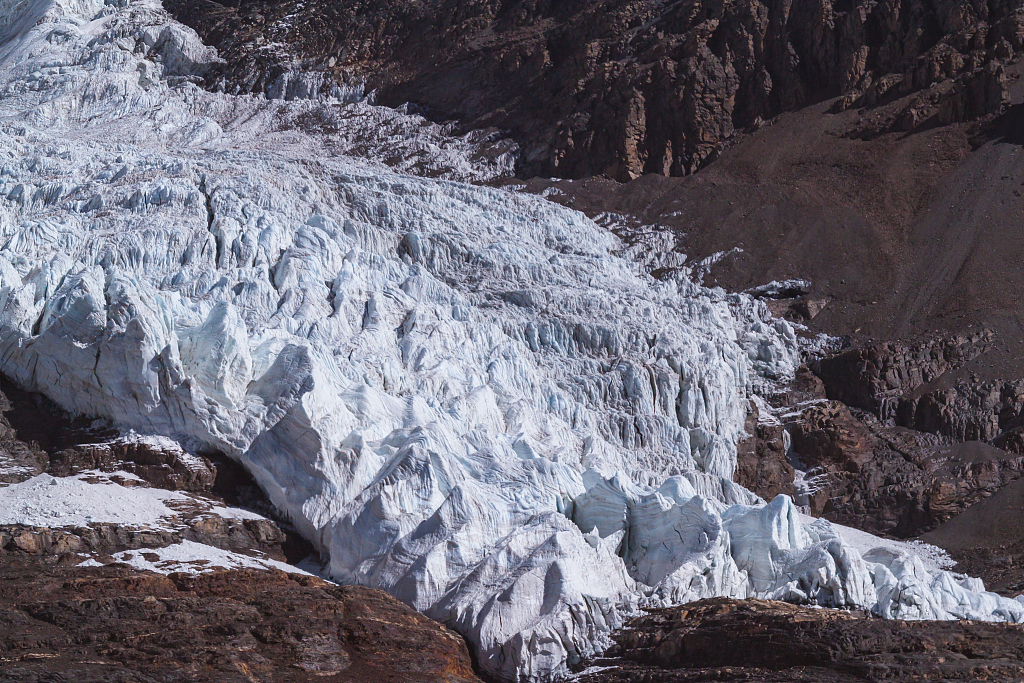Chinese and foreign researchers have evaluated the global chemical weathering rates beneath glaciers for the first time, revealing temporal and spatial variations and influence mechanisms.
Chemical weathering, also known as decomposition or decay, is the breakdown of rock by chemical mechanisms, and it usually changes the chemical composition of the rock through carbonation, hydration, hydrolysis or oxidation.
Researchers from China’s Northwest University, Chinese Academy of Sciences and the Pennsylvania State University collected the cation concentration data of 5,465 runoff samples from 77 glaciers worldwide and assessed the cation denudation rates (CDRs) of 10 global glacier regions and the Arctic and Antarctic sheets.


Glacier in retreat. /CFP
They revealed that the global chemical weathering rates beneath glaciers are three times higher than two decades ago, up to 10 times higher than ice sheet catchments, up to 50 times higher than whole ice sheet means and four times higher than major non-glacial riverine means, according to research published in the journal Nature Communications.
The study highlighted that glacial chemical weathering rates are positively correlated with air temperature, precipitation, and volume of runoff, while inversely correlated with latitude, suggesting glacial chemical weathering yields are likely to increase in the future, and it may become increasingly important for regional biogeochemical cycles.
Source: CGTN, 29-Jan-2022. https://news.cgtn.com/news/2022-01-29/Glacier-retreat-accelerates-global-chemical-weathering-17dbKMkmNMc/index.html
Read research paper: Nature Communications volume 13 no: 407 (2022), Xiangying Li et al, ‘Globally elevated chemical weathering rates beneath glaciers’.
https://www.nature.com/articles/s41467-022-28032-1